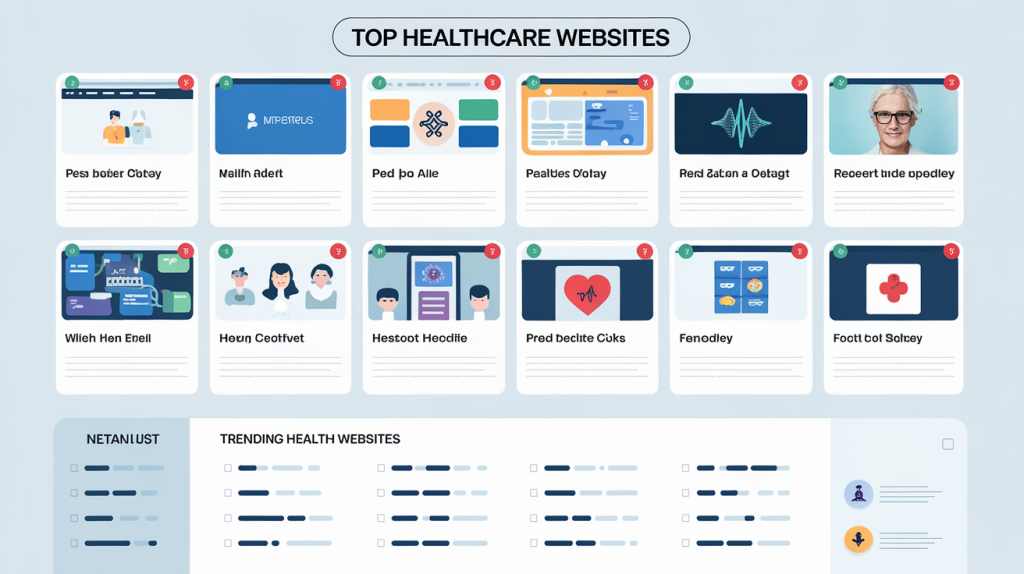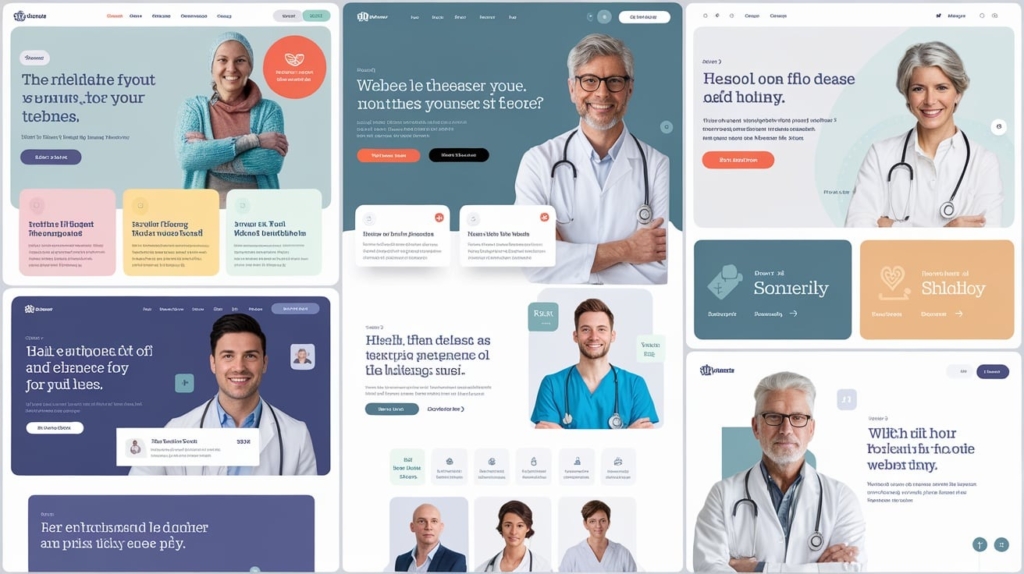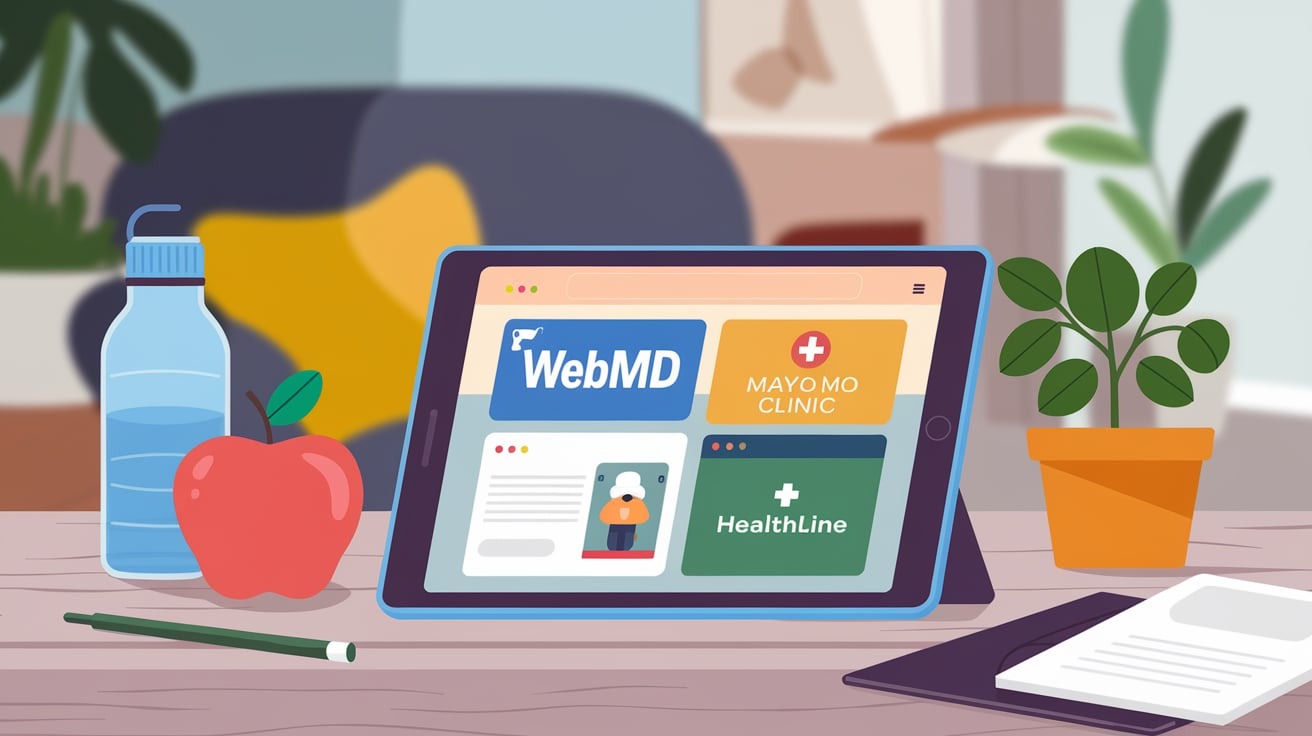Introduction
The world of healthcare websites has evolved dramatically, offering valuable insights into how digital platforms can influence the delivery of health services, patient engagement, and information accessibility. With an ever-increasing reliance on the internet for health-related queries and services, healthcare websites have become a crucial aspect of the modern healthcare system. But what makes some healthcare websites truly stand out? Why do certain health and wellness websites capture the attention of millions while others fall into obscurity? We will explore case studies of top healthcare websites and analyze their success factors. From user-centric design to innovative content strategies and seamless functionality, we’ll explain what works and why these websites continue to set the benchmark in the healthcare industry.
The Rise of Healthcare Websites and Their Importance
Before diving into specific case studies, it’s important to understand the significant role healthcare websites now play in the industry. Historically, healthcare providers primarily relied on in-person interactions, phone calls, or printed brochures to engage with patients. However, the digital age has shifted expectations, and websites have become the primary source for medical information, appointments, telemedicine, and more.
As the demand for online healthcare services has grown, the need for well-designed and user-friendly healthcare websites has surged. Today, patients expect easy access to health information, booking appointments, and even virtual consultations with healthcare professionals, all with a few clicks.
Healthcare websites must cater to a variety of users, from patients and caregivers to doctors and healthcare administrators. A top-notch healthcare website serves as a reliable, informative, and supportive platform for all of these groups, fostering trust, engagement, and better health outcomes.

Related Posts
- Website Design for Specific Healthcare Niches
- Online Courses and Resources
- Additional Resources for Healthcare Website Design
Most Popular Health Websites – Top Healthcare Websites
Let’s now take a look at some of the most popular health and wellness websites and explore what sets them apart from the competition. These case studies will offer real-world examples of effective healthcare website design and functionality.
Mayo Clinic
Mayo Clinic is one of the most respected names in the healthcare industry, and its website reflects the organization’s commitment to providing patients with trustworthy, accurate information.
Key features that make Mayo Clinic stand out:
- Trustworthy Content: Mayo Clinic’s website is a goldmine of well-researched, medically reviewed content. Every article is backed by scientific evidence and written by healthcare professionals.
- Patient-Centric Design: The design of the website is clean, accessible, and optimized for a great user experience. Whether a user is browsing for general health information or looking to schedule an appointment, everything is simple and intuitive.
- Search Functionality: The robust search tool allows users to find specific conditions, treatments, and medical professionals with ease.
What we can learn: A reliable healthcare website must prioritize high-quality, trustworthy content while ensuring that the website’s design is intuitive and focused on the patient’s needs. Mayo Clinic does this seamlessly.
WebMD
WebMD is one of the most widely recognized names when it comes to online health resources. Offering everything from symptom checkers to drug databases, WebMD serves millions of users each month.
Key features that make WebMD stand out:
- Symptom Checker: WebMD’s interactive symptom checker is one of its most popular features. It allows users to input symptoms and get a list of possible conditions, empowering individuals to take charge of their health.
- User-Friendly Design: The website uses a straightforward layout with easily navigable sections, ensuring that visitors can quickly find the information they need.
- Expert Content: WebMD combines content from healthcare professionals with patient-focused advice, making it both informative and accessible.
What we can learn: Engaging tools like a symptom checker, combined with user-centric design and high-quality content, are essential elements for a successful healthcare website. The balance between authoritative medical content and accessible, user-friendly resources is a key takeaway.
Healthline
Healthline is a trusted health website that focuses on providing accurate and up-to-date information on a wide range of health topics. Its clean design and detailed articles make it a go-to resource for health and wellness seekers.
Key features that make Healthline stand out:
- Clear and Detailed Articles: Healthline’s articles are comprehensive, well-researched, and easy to understand. They offer in-depth information on various topics, from common ailments to mental health.
- Medical Reviews: Each article on Healthline is reviewed by medical professionals, ensuring that the content is both accurate and credible.
- SEO Optimization: Healthline has mastered the art of SEO, consistently ranking high on search engines for a wide variety of health topics. This makes it easy for users to find reliable information on Google.
What we can learn: The key takeaway from Healthline is the importance of medical reviews and SEO optimization. Healthcare websites should prioritize high-quality content that is verified by professionals, while also ensuring that the content is optimized for search engine visibility.
Analysis of What Makes These Websites Stand Out

Trust and Credibility
Trust is paramount when it comes to healthcare websites. People turn to the internet for medical advice, so the information they find must come from reputable sources. Websites like Mayo Clinic, WebMD, and Healthline have built their reputations over time by providing scientifically backed, medically-reviewed content.
Related Posts
- Fitness and Wellness Websites: Design and Content
- Importance of Good Website Design for Healthcare and Wellness
- Email Marketing for Healthcare Professionals
Best Practices:
- Collaborate with medical professionals for content creation.
- Include references to scientific studies and research.
- Display certifications, affiliations, or accreditation from reputable health organizations.
User-Centered Design
In the healthcare space, user experience (UX) is vital. Healthcare websites must be easy to navigate, intuitive, and fast. Websites like Mayo Clinic and WebMD excel in providing a seamless experience by organizing information in a user-friendly way. Whether it’s making an appointment or finding information on a medical condition, the process is simple and stress-free.
Best Practices:
- Simplify navigation and reduce the number of clicks needed to find information.
- Optimize the site for mobile devices, as many users access health information on their phones.
- Offer a search bar for users to quickly find relevant information.
Comprehensive, Engaging Content
Successful healthcare websites offer not only accurate information but also detailed, engaging content that is both easy to understand and highly informative. WebMD and Healthline do this exceptionally well by offering a wide range of topics, including symptoms, treatments, and health tips.
Best Practices:
- Offer articles that provide both broad overviews and deep dives into specific health conditions.
- Include interactive tools such as symptom checkers, quizzes, or health calculators.
- Update content regularly to ensure that it remains current and accurate.
FAQs
What makes a healthcare website trustworthy?
A trustworthy healthcare website provides medically accurate, evidence-based information. It should have content that is reviewed by qualified healthcare professionals and come from reputable sources like hospitals or medical organizations. Security measures, such as a privacy policy and secure browsing, also contribute to trustworthiness.
Why is user experience (UX) so important for healthcare websites?
UX is crucial because healthcare websites often provide vital information or services to users in urgent situations. A website that is easy to navigate, fast to load, and mobile-friendly ensures that users can access the information they need quickly and with minimal frustration.
What role does content play in healthcare websites?
Content plays a significant role in establishing authority and trust in healthcare websites. High-quality, detailed, and clear content ensures that users can find the medical information they need, whether it’s a symptom checker, treatment options, or preventative health tips. Engaging content helps build the site’s credibility over time.
Key Takeaways
In conclusion, top healthcare websites such as Mayo Clinic, WebMD, and Healthline demonstrate the power of combining trustworthy content, user-centric design, and innovative features. By offering comprehensive medical information, easy navigation, and tools like symptom checkers, these sites provide valuable resources for people seeking healthcare advice online. These health and wellness websites stand out because they prioritize the needs of the user, ensuring they feel informed, supported, and confident in the resources they find. By following their lead and integrating similar principles into your healthcare website, you can build a platform that not only attracts traffic but also fosters trust and engagement with your audience.
- Trustworthy content is critical for healthcare websites—ensure all information is medically reviewed and backed by research.
- UX and mobile optimization are crucial in providing a seamless experience for users.
- High-quality, engaging content that covers a wide range of topics helps to establish authority and increase traffic.
